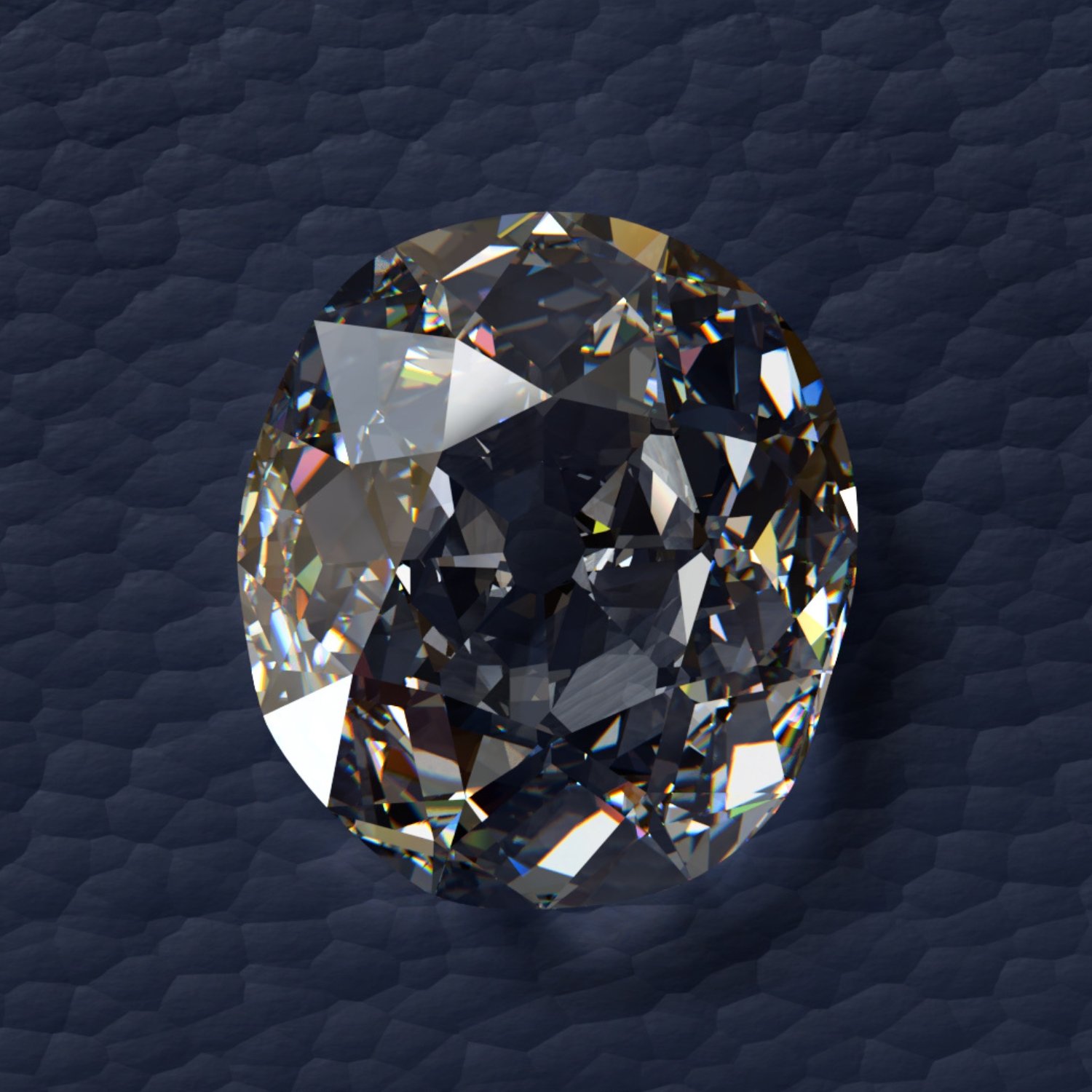The Sancy Diamond
The Sancy Diamond has a rich, enthralling history worthy of a movie plot with many sequels. Keeping track of all its adventures is no easy feat. This beautiful pale-yellow, shield-shaped diamond has exchanged hands, changed countries, disappeared and reappeared more times than we can count. At one point, it was even swallowed! Here is the fascinating story that has made the Sancy Diamond one of the most historic gemstones in the world.
The Sancy Diamond is believed to have been discovered in India, the world’s only supplier of gemstones up until the 17th century. Legend has it that in the 14th century, the diamond was smuggled from India to Italy by a Venetian diamond cutter. Its first chronicled appearance was in 1389 at the wedding of Valentina Visconti, the daughter of the Duke of Milan, and Louis I, the Duke of Orléans and brother of King Charles VI of France. The Sancy Diamond was listed as part of Valentina’s dowry as “The Balle de Flandres” and weighed over an astounding 100 carats at the time.
In the years that followed, a power struggle ensued between two sides of the French royal family, the Armagnacs and the Burgundians. After Louis I was assassinated by the Burgundians in 1407, Valentina sold the Sancy Diamond to raise funds for the Armagnacs. However, the Armagnacs lost the conflict and the Burgundians ended up with the Sancy Diamond.
The diamond stayed with the Burgundians for many generations, eventually reaching Charles the Bold. Charles had the diamond recut to the 55.23 carats it weighs today. It was one of the first large diamonds to be cut with symmetrical facets and interestingly has two crowns and no pavilion (the pointed bottom half of a diamond). Charles believed the Sancy Diamond brought immense luck and made him invincible when he wore it into battle. It always led him to victory until he lost the diamond at the Battle of Granson in 1476. In the battles that followed, Charles was defeated by the Swiss. It was later revealed that the Sancy Diamond had not been lost at all – the Bishop of Basel had hidden it.
The Sancy Diamond reappeared over a decade later when it was sold to Jacob Fugger, a German merchant and banker considered to be the richest man in history. Eyeing the profitable spice trade, Fugger sold the Sancy Diamond to King Manuel I of Portugal in exchange for exclusive rights in northern Europe over pepper from Portugal’s colonies.
When Portugal came under threat of Spanish rule in 1580, King Manuel I’s grandson and heir, Antonio de Crato fled the country with the Portuguese crown jewels. He sold the Sancy Diamond to Queen Elizabeth I of England, hoping to raise funds to regain the Portuguese throne. The Queen was pleased to have the diamond and even had herself painted wearing it. Soon after, she pawned it in Antwerp to help the Dutch keep their independence from Spain.
The diamond ended up in the Netherlands where it was bought by Nicholas Harlay de Sancy, a French diplomat and avid collector of gemstones and jewelry. It is he who gave the Sancy Diamond its name. Rumour has it when the Queen wished for the diamond back, de Sancy politely declined.
de Sancy was extremely popular in the French courts. He loaned the Sancy Diamond to King Henry III of France to wear in a special hat to conceal his hair loss. By King Henry IV’s reign, de Sancy had been made Minister of Finance. It was de Sancy’s idea to use the diamond as collateral for loans to expand the army. As the story goes, de Sancy sent one of his most faithful servants to deliver the Sancy Diamond. When the servant never reached his destination, some thought he had stolen the diamond and run away. However, de Sancy trusted in his servant’s loyalty and sent people out to investigate. The servant’s body was found and in the autopsy, the Sancy Diamond was recovered from his stomach. He had swallowed it to keep it away from the thieves!
Eventually, de Sancy was in desperate need of funds and sold the diamond to King James I of England in 1605. Upon James I’s death, his son Charles I succeeded to the throne and inherited the British crown jewels. King Charles I gifted the Sancy Diamond to his wife Queen Henrietta Maria, daughter of King Henry IV, on the occasion of their wedding.
Queen Henrietta pawned several jewels and gemstones in 1644 to support her husband during the civil war. After Charles I was executed in 1649, Cardinal Mazarin, the Prime Minister of France, paid off Queen Henrietta’s debts and took ownership of the gemstones. When the Cardinal died, he left his gemstone collection to King Louis XIV of France. This is how the Sancy Diamond became part of the French crown jewels. At the start of the French Revolution, in 1792, several jewels were stolen from the French treasury. The Sancy Diamond was among them, as well as other famous diamonds like the Hope Diamond and the Regent Diamond.
The Sancy Diamond did not resurface until 1828, when it was sold to Prince Demidoff of Russia. The Demidoff family sold it to an Indian merchant, Sir Jamsetjee Jeejeebhoy in 1865. He resold it a year later but it is not known to whom. The diamond reappeared again in Paris in 1867, where it was up for sale for 1,000,000 French francs by jeweller, G Bapst. It then disappeared from the public eye once more.
In 1906, Viscount William Astor bought the Sancy diamond as a wedding present for his son and daughter-in-law. Lady Astor famously wore the diamond in a tiara, and it stayed in the Astor Family for over seventy years. It was finally sold in 1978 for $1 million to the Louvre. After a lifetime of adventure, the Sancy Diamond continues to rest there, as a priceless piece of history for all to admire.
Dive deeper into the world of jewelry
Be sure to visit the blog. Get fascinating insights straight from experts around the world and pick up secret tips to make jewelry shopping a breeze.




